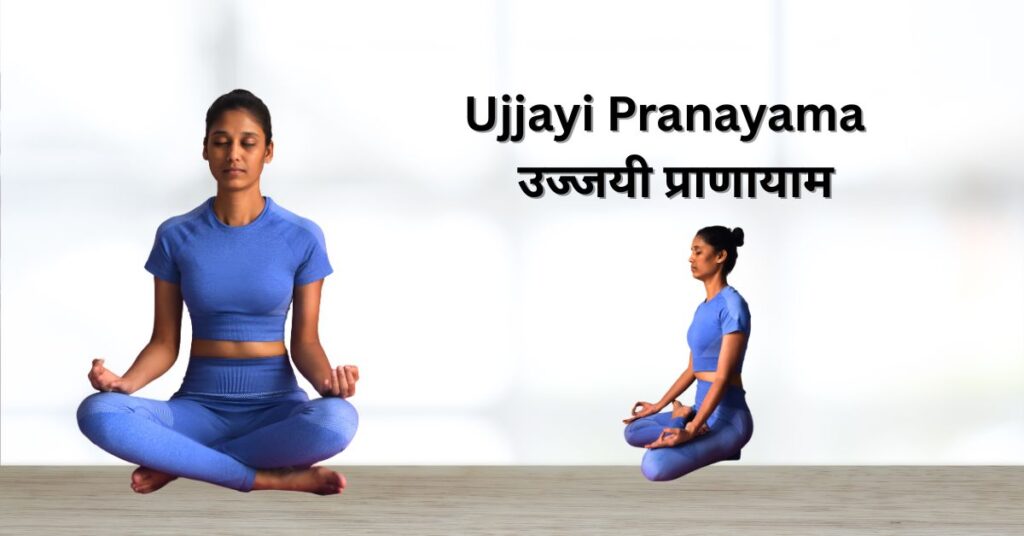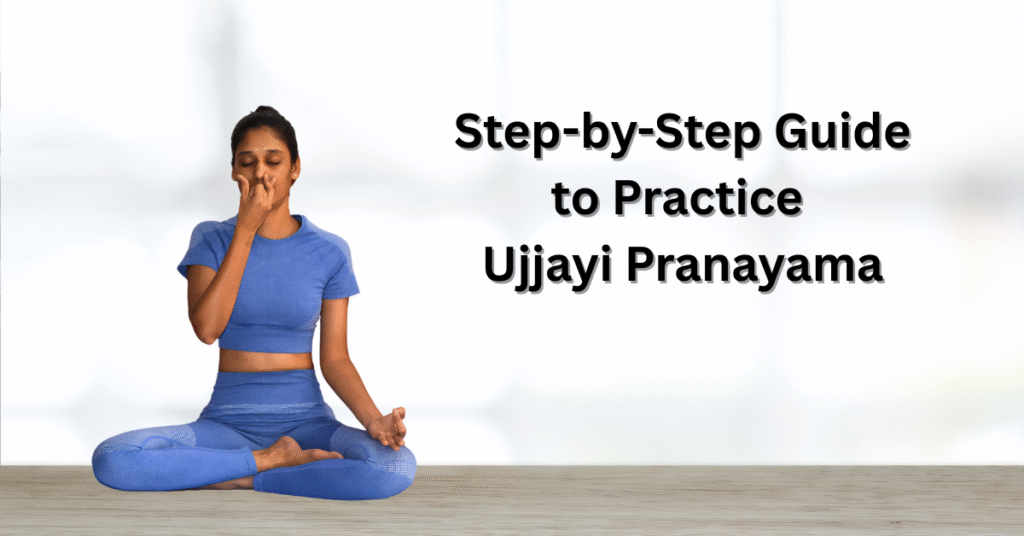Ocean breath | Ujjayi Pranayama | उज्जयी प्राणायाम

Ujjayi Pranayama is the process of inhaling and exhaling through both nostrils while contracting the throat muscles. In addition to the throat muscles contracting, a subtle sound similar to soft snoring should be produced. This soft snoring should be audible only to the practitioner, and while it may be loud at first, it should gradually become soft and subtle. The deep, soft sound during inhalation and exhalation is nothing more than psychic breath awareness, hence the name of this pranayama – psychic breath.
Ujjayi Pranayama is a breathing technique where you breathe in and out through your nose while gently tightening your throat to create a soft, ocean-like sound. The focus is on being fully aware of your breath as it moves through your throat, helping you stay calm and centered. Observing this type of breathing necessitates complete awareness of the senses of feeling and hearing. When one feels and hears the vibration and sound at the throat with full awareness, the body automatically receives signals to stay calm and relaxed. In simple terms, prana vidya means “understanding your life energy,” where prana means life energy and vidya means knowledge. Ujjayi Pranayama is frequently incorporated into the physical practice of asanas, as seen in Ashtanga Yoga, Vini Yoga, and Vinyasa Yoga. This type of breathing is said to come naturally as one becomes deeply involved in asana practices.
Ujjayi Pranayama makes us feel light and loosens any stiffness in the body. This type of breathing can be used in arm balance and inversion yoga poses for more intense practices. The body is well prepared for more advanced yoga because this type of breathing regulates the heat in the body, with the core muscles becoming warmer from the inside.
Step-by-step guide for Ujjayi pranayama –

- Gently close your mouth and slightly tighten your throat (the glottis, located in your voice box)..
- After a short exhalation, begin inhaling slowly and rhythmically in one long and uninterrupted inspiration.
- Let the air pass through your slightly tightened throat, creating a soft, whispering sound.
- Continue inhaling slowly until your chest feels comfortably full.
- Keep the inhaled air in your lungs for 6 seconds (preferably double the period of inspiration).
- Maintain a straight spine, head, and neck while sitting.
- Breathe out slowly and smoothly, without any sudden or forced movements. Let the exhale feel natural and steady.
- Take a few deep breaths and relax.
Benefits of Ujjayi pranayama
- Aids in the correction of fluid retention in the body (edema/dropsy).
- Clears phlegm and stimulates the appetite.
- It is beneficial in the treatment of chronic colds, coughs, indigestion, liver problems, dysentery, fever, and other diseases.
- Purification of seven dhatus (elements): skin, flesh, blood, bones, marrow, fat, and sperm.
- The voice is being enriched.
- Thyroid stimulation and balance.
- This deep breathing helps to reduce infections or allergies in the lungs, address issues related to asthma, and clear the passage with improved lung capacity.
- Ujjayi Pranayama helps you become more aware of your breath by focusing on the sound and feeling it creates in the back of your throat.
Contraindications –
- Those who have a history of heart problems, migraines, high blood pressure, or any other ailment, should keep the yoga teacher informed of the same.
- Ujjayi Pranayama should not be practiced by pregnant women or women who are menstruating because it puts strain on the abdominal organs while also causing a change in body temperature, which may be dangerous.
- If a student feels uneasy or dizzy, or if they are unable to coordinate their breathing at any point during the practice, they should stop immediately and breathe normally.
- If you are constantly tired, anxious, or panicked, do not practice this pranayama because it can be harmful to your lungs and heart.
However, as part of the cooling process, the psychic breath can be practiced with sitkari and sitali as part of pranayama. Ujjayi Pranayama expands and improves the quality of the breath. This increases the flow of prana (vital energy) through the nadis (energy pathways).